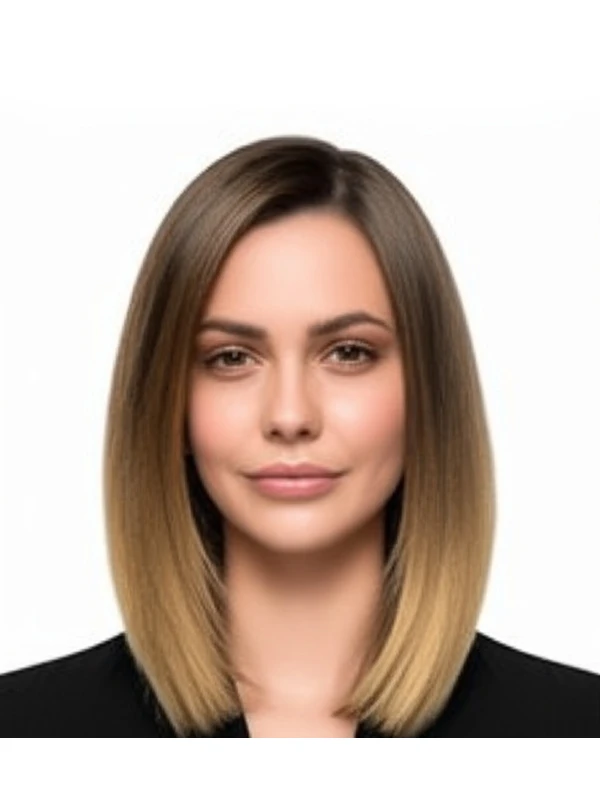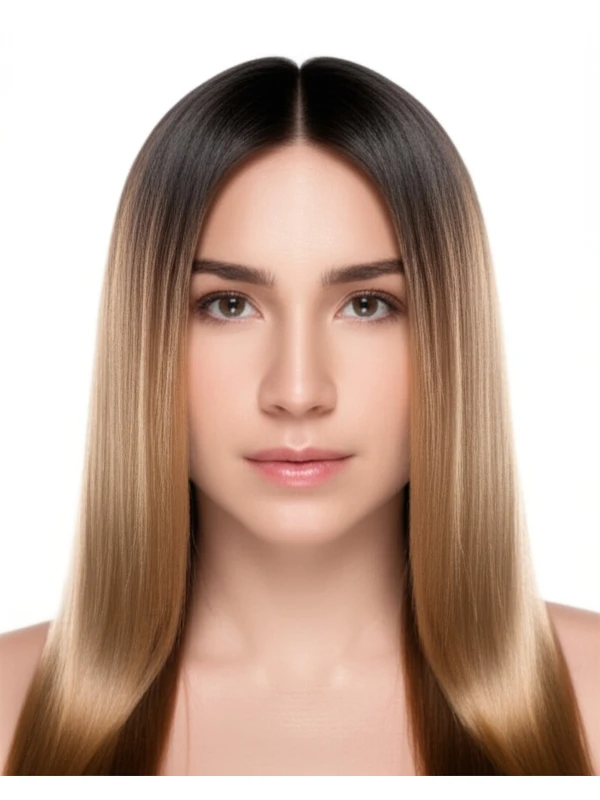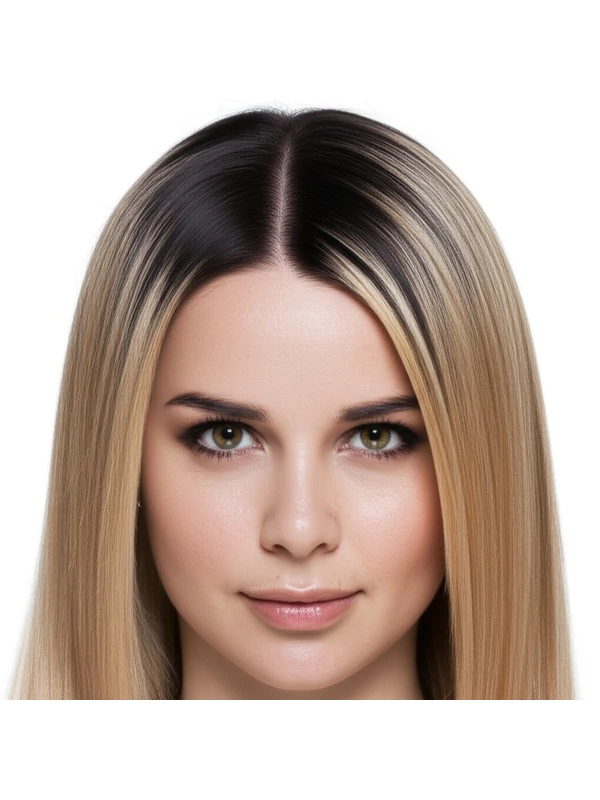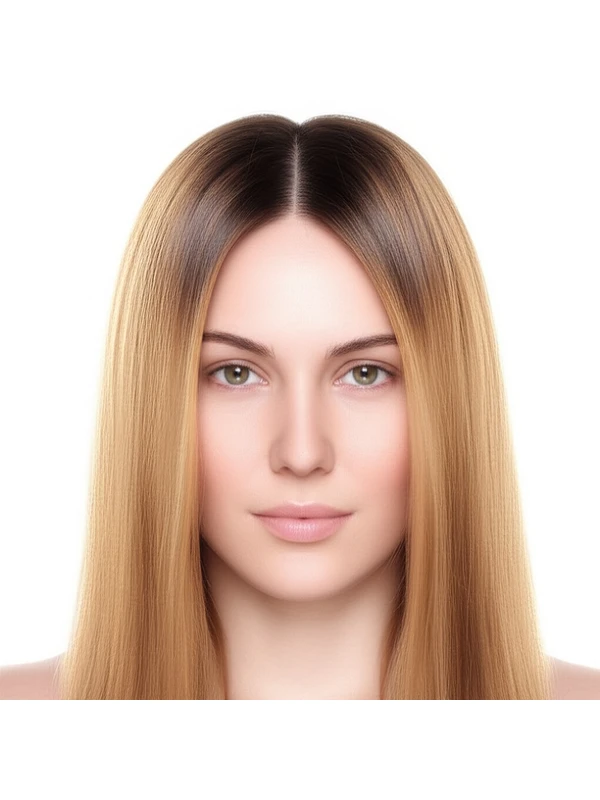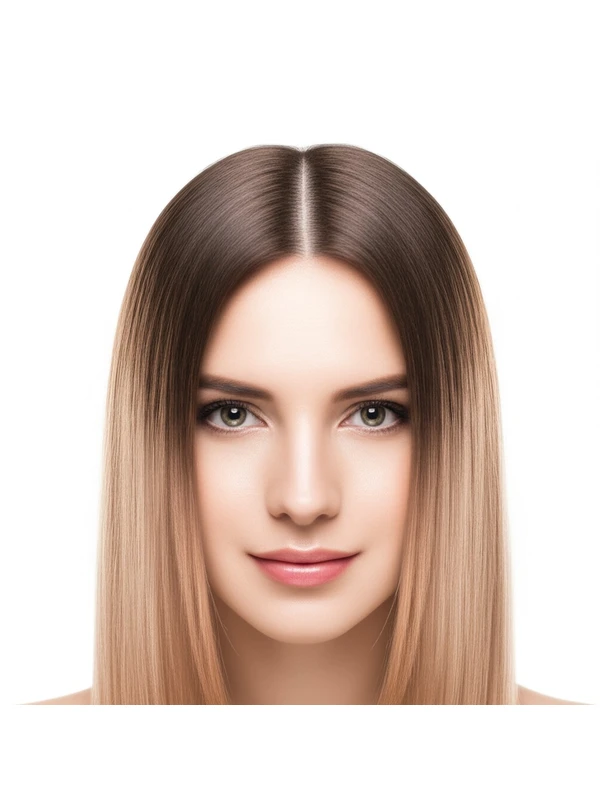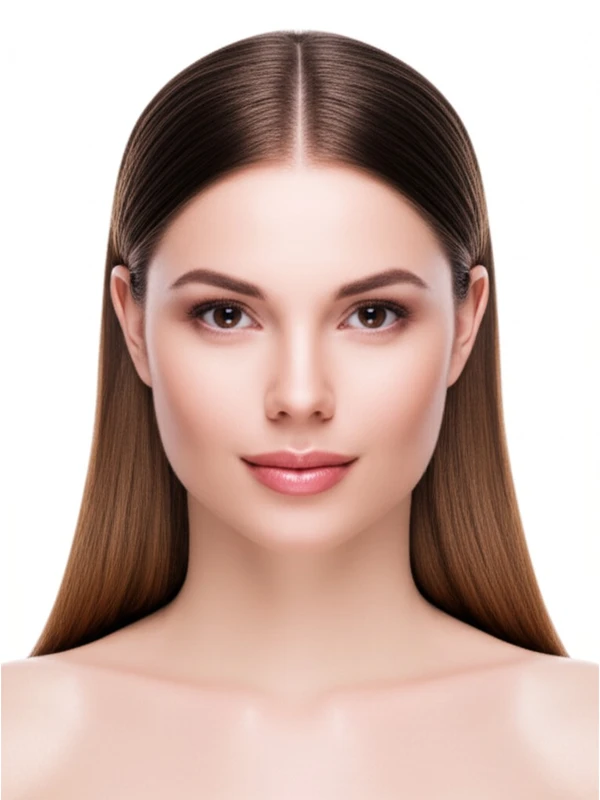#Shadow Root: A Guide to Subtle Dimension
Shadow roots are a popular hair coloring trend that creates a soft transition between your natural root color and the lengths of your hair. It's all about adding dimension without harsh lines – think understated elegance rather than bold contrast. This guide breaks down everything you need to know, from how it’s done to how to keep it looking its best.
#1. What is a Shadow Root & How Does It Work?
A shadow root involves strategically placing color close to the scalp, allowing some of your natural root color to show through. The goal isn't complete coverage but rather a blended effect that appears softer and more diffused than traditional highlights or balayage.
Tools Used:
- Color & Developer: The stylist will choose a shade slightly lighter (or darker) than the mid-lengths and ends, depending on your desired look.
- Applicator Brush/Foils (Sometimes): While some shadow root techniques are freehand, foils may be used in certain areas to control placement and intensity. This is more common for achieving greater lift or contrast.
- Gloves: Essential for protecting skin from color.
- Mixing Bowl & Measuring Tools: For accurate color mixing.
Placement & Timing:
The stylist will typically apply the color around the hairline, along the part, and in areas that benefit from added dimension (like face-framing sections). The timing varies based on hair texture, density, and desired level of lift – usually between 15–30 minutes under a heat source or longer at room temperature. A root smudge is often performed after the initial color application to further soften the line.
#2. Best Use Cases: What Does It Achieve?
Shadow roots are incredibly versatile and can achieve several aesthetic goals:
- Adding Dimension: The most common reason – it creates depth and visual interest, especially in solid-color hair.
- Root Blur/Softening Harsh Lines: It minimizes the obvious line between your natural root color and the colored lengths, making grow-out less noticeable.
- Face Framing: Strategic placement around the face can brighten and soften features.
- Subtle Coverage (Gray Blending): While not a primary gray coverage technique, it can subtly blend away some grays by softening their appearance within the overall color dimension. It's best suited for those with sparse gray hair rather than full-on coverage needs.
#3. Who Suits a Shadow Root?
Shadow roots are surprisingly adaptable but thrive on certain characteristics:
- Natural Color Level: Works well from dark brown to light blonde bases, although the effect will be more subtle on darker hair.
- Undertone: Consider your skin’s undertones (warm or cool). Warm tones pair beautifully with golden shadow roots; cooler tones look stunning with ashier or beige-toned shadows. A stylist can best advise you here.
- Hair Type/Texture:
- Straight Hair: Creates a beautiful, blended effect.
- Wavy Hair: The waves naturally diffuse the color for an even softer appearance.
- Curly & Coily Hair: Adds dimension and definition while minimizing root visibility – crucial for curl patterns that can obscure roots.
- Hair Density: Works on both fine and thick hair, though placement will vary to suit density.
- Hair Length: Looks fantastic on all lengths—short bobs, lobs (long bobs), shoulder-length styles, and long hair alike.
- Lifestyle: Ideal for those who want a low-maintenance look that still feels modern and stylish. It’s great for people who don't have much time to visit the salon frequently.
#4. Shadow Root vs. Similar Techniques
Understanding how shadow root differs from other coloring techniques is key:
- Balayage: Balayage involves hand-painted highlights, often with a more dramatic contrast and wider sections of color. Shadow roots can be incorporated into a balayage look for a softer transition at the root.
- Foilyage: A combination of foiling (using foils to isolate sections) and balayage painting – offers greater control over lift and dimension than traditional balayage, but still more contrast than shadow roots.
- Highlights: Traditional highlights involve very defined lines of color; shadow root avoids these harsh distinctions.
- Root Smudge: A root smudge is often the finishing touch to a shadow root technique. It's the process of blending the line between the colored hair and natural roots using a lighter shade, softening any remaining sharpness. A shadow root can exist without a full-blown balayage or foilyage application; it’s primarily about the softened root transition.
#5. Maintenance & Longevity
Keeping your shadow root looking fresh requires planning:
- Salon Timing: Typically every 4–6 months, depending on hair growth and desired intensity.
- Toner/Gloss Refresh: A toner or gloss can be applied every 8-12 weeks to maintain the overall tone of the lengths and ends, especially if they start to look brassy or fade.
- Grow-Out Behavior: The gradual fading is one of shadow root's biggest advantages! It blends naturally as your roots grow in.
- Budget/Time Planning: Shadow root appointments generally take 2–3 hours and cost between $150-$400+ depending on location, stylist experience, and hair length/density. Toner/gloss refreshes are quicker (around an hour) and less expensive ($75-$150).
#6. At-Home Care Tips
- Wash Cadence: Reduce washing to 2–3 times per week to preserve color vibrancy.
- Heat Protection: Always use a heat protectant spray before using styling tools (blow dryers, straighteners, curling irons). Heat accelerates color fading.
- Color-Safe Care: Use sulfate-free shampoo and conditioner specifically formulated for colored hair. These products are gentler and help retain moisture and pigment.
- Cool Water Rinse: Rinsing with cool water helps seal the cuticle, locking in color and shine.
#7. Pros & Cons
Pros:
- Low maintenance grow-out
- Adds dimension without harsh lines
- Versatile for various hair types and lengths
- Can soften face features
- Subtle gray blending potential
Cons:
- Less dramatic than traditional highlights or balayage
- Requires a skilled stylist to achieve the softest blend
- May not provide sufficient gray coverage for everyone
#8. Salon Consultation Script: Questions to Ask Your Stylist
To ensure you get the shadow root look you want, be prepared with these questions:
- "What level of contrast are we aiming for between my roots and lengths?"
- "Can you show me examples of shadow root looks that suit my hair type/texture?"
- "How will you customize the placement to flatter my face shape?"
- “Will a root smudge be included, and if so how much blending will occur?”
- "What products do you recommend for at-home care to maintain this color?"
- "Can we discuss a realistic timeline for future appointments based on my hair growth?"
#9. Frequently Asked Questions
- Can I get a shadow root if I have dark brown hair? Yes! It will be more subtle, but it can still add beautiful dimension. The stylist may need to use a slightly lighter shade of color to achieve the desired effect.
- Is a shadow root damaging to my hair? Like any coloring process, it involves chemicals. However, with proper technique and care (using gentle products), damage can be minimized. Discuss your concerns about hair health with your stylist beforehand.
- Can I do a shadow root myself at home? While technically possible, achieving the softest blend requires skill and experience. It's best left to professionals for optimal results. Uneven application is common with DIY attempts.
- How long does a shadow root last? The color itself will gradually fade over several months, but the "shadow" effect (the softened transition) lasts until your roots grow out significantly – typically 4-6 months.
- Will a shadow root cover my gray hair completely? No, it's not designed for full gray coverage. It can soften their appearance and blend them in with dimension, but they will still be visible.
- What if I want to go back to solid color after having a shadow root? The transition requires careful planning and potentially multiple toning sessions to even out the color. A consultation is crucial for this process.
- Can I have a shadow root with previously highlighted hair? Absolutely! It's a great way to refresh existing highlights or soften their appearance.
- What if my roots grow in very quickly? The stylist can adjust the placement and intensity of the color to accommodate faster root growth, ensuring the effect remains soft and blended.
